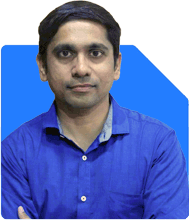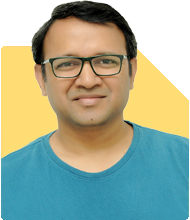Ramalingam Kalirajan |10894 Answers |Ask -Follow
Mutual Funds, Financial Planning Expert - Answered on May 20, 2024
He has an MBA in finance from the University of Madras and is a certified financial planner.
He is the director and chief financial planner at Holistic Investment, a Chennai-based firm that offers financial planning and wealth management advice.... more

I am having following 6 regular SIPs in mutual funds 1. SBI Contra Fund Rs 2,000/- 2. SBI Small Cap Fund ,000/- 3. SBI Retirement Benefit Fund Aggressive Growth Rs 2,000/- 4. SBI PSU Fund lumpsum Rs 11000/- 5. Quant Small Cap Fund Rs 1000/- 6. ICICI Prudential Infrastructure Growth Fund 500/- Please advise whether I should continue with these funds or exit. Aloke
Overview of Your Current Investments
You have a diversified portfolio with the following SIPs and a lump sum investment:
SBI Contra Fund: ?2,000/- per month
SBI Small Cap Fund: ?2,000/- per month
SBI Retirement Benefit Fund Aggressive Growth: ?2,000/- per month
SBI PSU Fund: Lump sum ?11,000/-
Quant Small Cap Fund: ?1,000/- per month
ICICI Prudential Infrastructure Growth Fund: ?500/- per month
Compliments on Your Investment Strategy
Your disciplined approach to investing through regular SIPs is commendable. Investing in a variety of funds shows your understanding of diversification. This strategy helps mitigate risks and enhances the potential for growth.
Analytical Review of Your Portfolio
SBI Contra Fund:
Contra funds invest in undervalued stocks, anticipating future growth.
These funds can offer high returns but come with increased risk.
Consider if this aligns with your risk tolerance and investment horizon.
SBI Small Cap Fund:
Small cap funds can generate significant growth over time but are highly volatile.
Ensure this fund aligns with your risk appetite and long-term goals.
SBI Retirement Benefit Fund Aggressive Growth:
This fund focuses on long-term growth for retirement.
It's a good choice for aggressive investors aiming for high returns over time.
SBI PSU Fund:
Investing in Public Sector Units can be beneficial but is sector-specific and carries concentration risk.
Regularly review this fund's performance and the overall sector outlook.
Quant Small Cap Fund:
Like the SBI Small Cap Fund, this fund offers high growth potential with high risk.
Diversifying within the small cap segment might not be necessary.
ICICI Prudential Infrastructure Growth Fund:
Infrastructure funds invest in infrastructure-related companies.
These funds can provide good returns during economic growth periods but are sector-specific and volatile.
Recommendations for Portfolio Improvement
Diversify Across Market Caps and Sectors:
Your portfolio has a significant focus on small cap and sector-specific funds.
Consider adding a large cap or a diversified equity fund to balance risk and stability.
Consolidate Small Cap Investments:
Holding multiple small cap funds may not be necessary.
You can consolidate into one fund to avoid overlap and simplify management.
Review Sector-Specific Funds:
Sector-specific funds like PSU and Infrastructure can be volatile.
Regularly monitor their performance and consider switching to more diversified funds if needed.
Consider Professional Management:
Direct funds have lower expenses but require active monitoring.
Investing through a certified financial planner can provide professional management and potentially better returns.
Steps for Continued Success
Regular Portfolio Reviews:
Periodically review your portfolio to ensure it aligns with your goals and market conditions.
Make adjustments as needed to stay on track.
Increase SIP Amounts Gradually:
As your income grows, consider increasing your SIP amounts.
This will help you build a larger corpus over time.
Maintain an Emergency Fund:
Ensure you have an emergency fund to cover unexpected expenses.
This prevents the need to withdraw from your investments prematurely.
Stay Informed and Educated:
Stay updated on market trends and financial news.
Continuous learning will help you make informed investment decisions.
Conclusion
Your current portfolio is well-diversified but has a significant focus on small cap and sector-specific funds. Consider balancing it with more stable large cap or diversified equity funds. Regularly review and adjust your investments to align with your goals and risk tolerance. Your disciplined investment strategy and thoughtful planning are commendable. With consistent efforts and regular reviews, you are well on your way to achieving your financial goals.
Best Regards,
K. Ramalingam, MBA, CFP,
Chief Financial Planner,
www.holisticinvestment.in
You may like to see similar questions and answers below
Omkeshwar Singh | Answer |Ask -Follow
Head, Rank MF - Answered on Sep 04, 2020
Omkeshwar Singh | Answer |Ask -Follow
Head, Rank MF - Answered on Aug 11, 2021
Hemant Bokil | Answer |Ask -Follow
Financial Planner - Answered on Jan 16, 2024
Ramalingam Kalirajan |10894 Answers |Ask -Follow
Mutual Funds, Financial Planning Expert - Answered on May 29, 2024
Ulhas Joshi |280 Answers |Ask -Follow
Mutual Fund Expert - Answered on Dec 14, 2023
Mayank Chandel |2576 Answers |Ask -Follow
IIT-JEE, NEET-UG, SAT, CLAT, CA, CS Exam Expert - Answered on Dec 17, 2025
Radheshyam Zanwar |6747 Answers |Ask -Follow
MHT-CET, IIT-JEE, NEET-UG Expert - Answered on Dec 16, 2025
Shalini Singh |181 Answers |Ask -Follow
Dating Coach - Answered on Dec 16, 2025
Patrick Dsouza |1429 Answers |Ask -Follow
CAT, XAT, CMAT, CET Expert - Answered on Dec 16, 2025
Nayagam P P |10858 Answers |Ask -Follow
Career Counsellor - Answered on Dec 16, 2025
Nayagam P P |10858 Answers |Ask -Follow
Career Counsellor - Answered on Dec 16, 2025
Samraat Jadhav |2510 Answers |Ask -Follow
Stock Market Expert - Answered on Dec 16, 2025
Samraat Jadhav |2510 Answers |Ask -Follow
Stock Market Expert - Answered on Dec 16, 2025
Nayagam P P |10858 Answers |Ask -Follow
Career Counsellor - Answered on Dec 16, 2025
Nayagam P P |10858 Answers |Ask -Follow
Career Counsellor - Answered on Dec 16, 2025





























